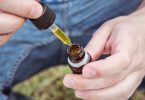According to recent survey results, 64% of US adults are familiar with cannabidiol (CBD), and one-third of Americans have used it during their lifetime. Nowadays, consumers have a variety of CBD products from which they can choose. Although, legal CBD products are only allowed to contain less than 0.3% of tetrahydrocannabinol (THC).
Despite this, CBD is becoming increasingly popular because of its many health benefits. After all, determining a safe and effective dosage is important, especially for those consuming CBD for health reasons and not recreation.
More people are beginning to wonder what the right CBD dosages are for them.
What CBD Dosages Are Safe?
Data on CBD use in humans remains fairly limited, especially regarding the effects of consuming pure CBD. Most researchers have determined that CBD has relatively low toxicity, but serious risks are still involved with people taking too high dosages of CBD. [1]
Yet, since caution is still recommended because of sparsely available information, many health practitioners recommend a person start with a small dose. Once they get used to the small dosage, they can increase it in five-milligram increments until a minimal effective dosage is determined for symptom relief.
There are, of course, maximum limits of recommended dosages depending on the condition and several factors surrounding the person consuming the CBD, like their age and weight.
However, according to a survey conducted by a group of researchers over a 28-day trial, 1,500 mg per day of CBD is found to cause no harm to humans in addition to not causing any signs of withdrawal. [2]
What Are The CBD Dosages For Different Conditions?
Firstly, it should be noted that the Food and Drug Administration (FDA) doesn’t regulate the use of CBD except for a prescription drug that’s used to treat epilepsy. It’s also highly illegal for an individual or company to market CBD as a supplement or add it to food sold commercially.
However, there are some dosages that researchers have used that have been widely deemed safe because of their therapeutic effect on different medical conditions.
- Psychosis – 1200 mg daily for four weeks. (oral)
- Schizophrenia – 40 mg to 1,280 mg per day for four weeks. (oral)
- Parkinson’s disease – 75 mg to 300 mg (oral) [3]
- Anxiety – 300 mg to 600 mg (oral) [4]
- Huntington’s disease – Up to 12 sprays (nasal) [5]
- Bowel disease – 5 mg twice daily. (drops) [6]
- Pain caused by cancer – 50 mg to 600 mg daily (oral) [7]
- Type two diabetes – 100 mg twice daily. (oral) [8]
Since CBD remains an active field of research, it’s usually best to consult a doctor for the correct dosage for your condition.
References
[1] Huestis MA, Solimini R, Pichini S, Pacifici R, Carlier J, Busardò FP. Cannabidiol adverse effects and toxicity. Current neuropharmacology. https://www.ncbi.nlm.nih.gov/pmc/articles/PMC7052834/. (2022) [Journal impact factor = 7.363] [times cited = 197][2] Iffland K, Grotenhermen F. An update on safety and side effects of Cannabidiol: A review of Clinical Data and relevant animal studies. Cannabis and cannabinoid research. https://www.ncbi.nlm.nih.gov/pmc/articles/PMC5569602/. August 17, 2022. [Journal impact factor = 4.786] [Times cited = 468]
[3] Peres FF, Lima AC, Hallak JEC, Crippa JA, Silva RH, Abílio VC. Cannabidiol as a promising strategy to treat and prevent movement disorders? Frontiers in pharmacology. https://www.ncbi.nlm.nih.gov/pmc/articles/PMC5958190/. 2018. [Journal impact factor = 5.988] [Times cited = 107]
[4] Blessing EM, Steenkamp MM, Manzanares J, Marmar CR. Cannabidiol as a potential treatment for anxiety disorders. Neurotherapeutics: the journal of the American Society for Experimental NeuroTherapeutics. https://www.ncbi.nlm.nih.gov/pmc/articles/PMC4604171/. 2015. [Journal impact factor = 8.296] [Times cited = 559]
[5] Peres FF, Lima AC, Hallak JEC, Crippa JA, Silva RH, Abílio VC. Cannabidiol as a promising strategy to treat and prevent movement disorders? Frontiers in pharmacology. https://www.ncbi.nlm.nih.gov/pmc/articles/PMC5958190/. 2018. [Journal impact factor =5.988] [Times cited = 107]
[6] Fasinu PS, Phillips S, ElSohly MA, Walker LA. Current status and prospects for cannabidiol preparations as new therapeutic agents. Pharmacotherapy: The Journal of Human Pharmacology and Drug Therapy. 2016;36(7):781-796. doi:10.1002/phar.1780 [Journal impact factor = 3.196] [Times cited = 138]
[7] Good P, Haywood A, Gogna G, et al. Oral medicinal cannabinoids to relieve symptom burden in the palliative care of patients with advanced cancer: A double-blind, placebo controlled, randomised clinical trial of efficacy and safety of Cannabidiol (CBD) – BMC palliative care. BioMed Central. https://bmcpalliatcare.biomedcentral.com/articles/10.1186/s12904-019-0494-6. Published December 6, 2019. [Journal impact factor = 7.98] [Times cited = 26]
[8] Jadoon KA, Ratcliffe SH, Barrett DA, et al. Efficacy and safety of Cannabidiol and Tetrahydrocannabivarin on glycemic and lipid parameters in patients with type 2 diabetes: A randomized, double-blind, placebo-controlled, Parallel Group Pilot Study. American Diabetes Association. https://diabetesjournals.org/care/article/39/10/1777/129/Efficacy-and-Safety-of-Cannabidiol-and. 2016. [Journal impact factor = 7.273] [Times cited = 162]
Image: Unsplash – Elsa Olofsson










